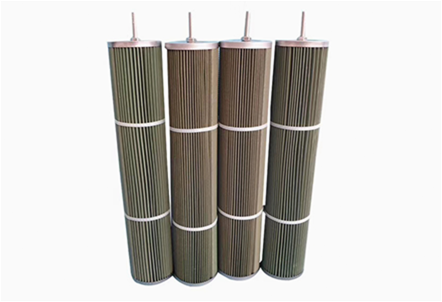 Tel:
+8615930870079
Tel:
+8615930870079
aug . 01, 2024 01:55 Back to list
Innovative Carbon-Infused Cellulose Filter Cartridge for Enhanced Filtration Performance and Sustainability
The Role of Carbon Impregnated Cellulose Filter Cartridges in Water Filtration
In recent years, the demand for efficient water filtration solutions has grown exponentially due to increasing concerns over water quality and environmental sustainability. Among the various methods available, carbon impregnated cellulose filter cartridges have emerged as a highly effective option for purifying water. These cartridges combine the natural properties of cellulose with the adsorption capabilities of activated carbon, creating a filtration medium that addresses multiple contaminants in water systems.
Composition and Structure
Carbon impregnated cellulose filter cartridges are made from a combination of cellulose fibers and activated carbon. Cellulose, a naturally occurring polymer found in the cell walls of plants, serves as a robust and biodegradable base material. It possesses excellent mechanical properties, allowing the filter cartridge to maintain structural integrity under varying flow rates and pressures. The activated carbon, on the other hand, is produced by heating carbon-rich materials in the absence of oxygen, resulting in a highly porous substance with a vast surface area. This porosity makes activated carbon exceptionally effective at adsorbing impurities, including chlorine, volatile organic compounds (VOCs), and certain heavy metals.
Filtration Mechanism
The filtration process in carbon impregnated cellulose cartridges operates through two primary mechanisms physical filtration and adsorption. When water passes through the cartridge, larger particulates and sediments are physically trapped within the cellulose matrix. Simultaneously, dissolved contaminants are attracted to the activated carbon surfaces due to Van der Waals forces and chemical interactions, wherein they adhere to the carbon rather than passing through.
This dual-action filtering process not only improves water clarity but also enhances taste and odor by removing unpleasant substances. As a result, the use of carbon impregnated cellulose filter cartridges contributes to the overall safety and palatability of drinking water.
Environmental Benefits
carbon impregnated cellulose filter cartridge

One of the most significant advantages of using cellulose-based filters is their eco-friendliness. Cellulose is a renewable resource, and its biodegradability helps minimize the environmental impact associated with filter disposal. In contrast, many traditional filters rely on synthetic materials that can take centuries to decompose. Therefore, by choosing carbon impregnated cellulose cartridges, consumers can enjoy filtered water while supporting sustainable practices.
Moreover, the energy required to manufacture and process cellulose is generally lower than that for synthetic alternatives, further reducing the carbon footprint associated with water filtration systems.
Applications and Versatility
Carbon impregnated cellulose filter cartridges are widely used across various applications, from residential settings to industrial water treatment facilities. In households, they are commonly incorporated into under-sink filtration systems, faucet-mounted filters, and pitcher filters to provide clean and safe drinking water. In industrial applications, these cartridges may be employed to treat process water, ensuring that manufacturing standards are met without compromising on water quality.
The versatility of these filter cartridges extends beyond water treatment. They also demonstrate effectiveness in air purification systems, where they can trap airborne toxins and improve indoor air quality, showcasing their multifaceted applications.
Conclusion
In conclusion, carbon impregnated cellulose filter cartridges represent a significant advancement in water filtration technology. Their unique combination of natural cellulose fibers and activated carbon enables effective removal of contaminants while promoting environmental sustainability. As communities continue to prioritize water quality and ecological responsibility, these innovative filter cartridges are poised to play a crucial role in addressing the challenges of safe drinking water provision. By investing in such filtration solutions, consumers can make informed choices that benefit both their health and the environment.
-
Types and Applications of Air Filtration CartridgesNewsJul.28,2025
-
The Role of Gas Turbine FiltersNewsJul.28,2025
-
Mastering Air Filter Cartridge UseNewsJul.28,2025
-
Advanced Turbine Filters for Modern Gas TurbinesNewsJul.28,2025
-
Cellulose Air Filter Cartridge Advantages in Dust FiltrationNewsJul.28,2025
-
Cellulose Filters for Air Particle ReductionNewsJul.28,2025

 Email:
Email:





